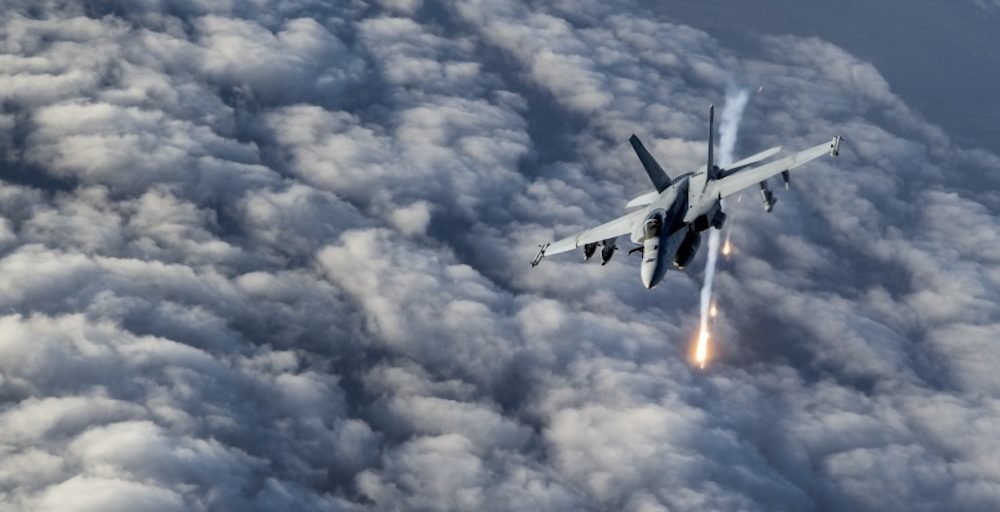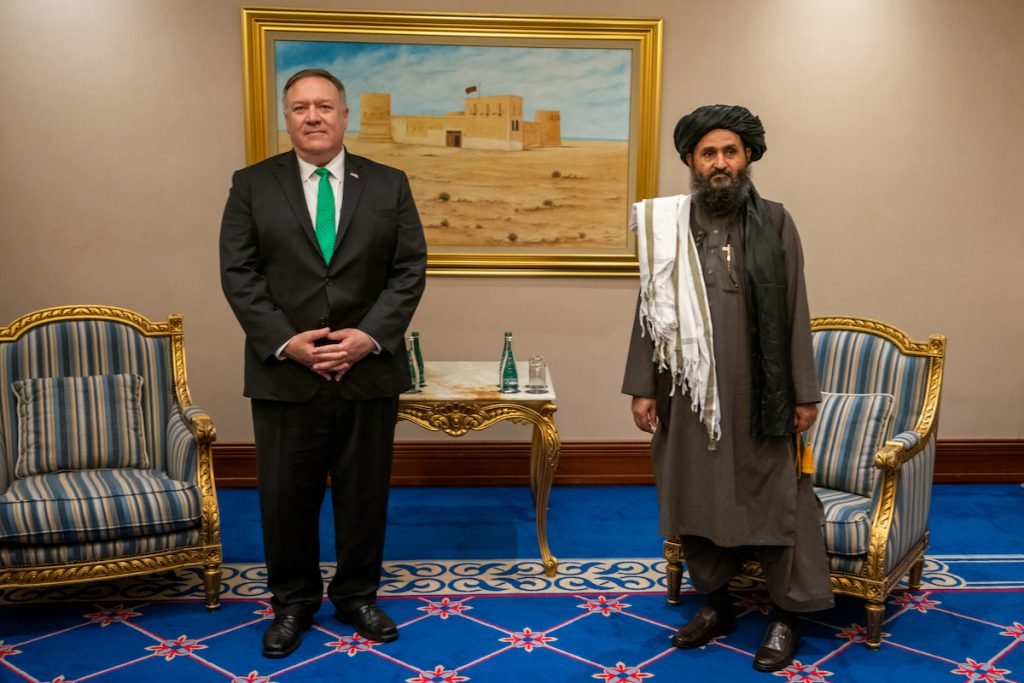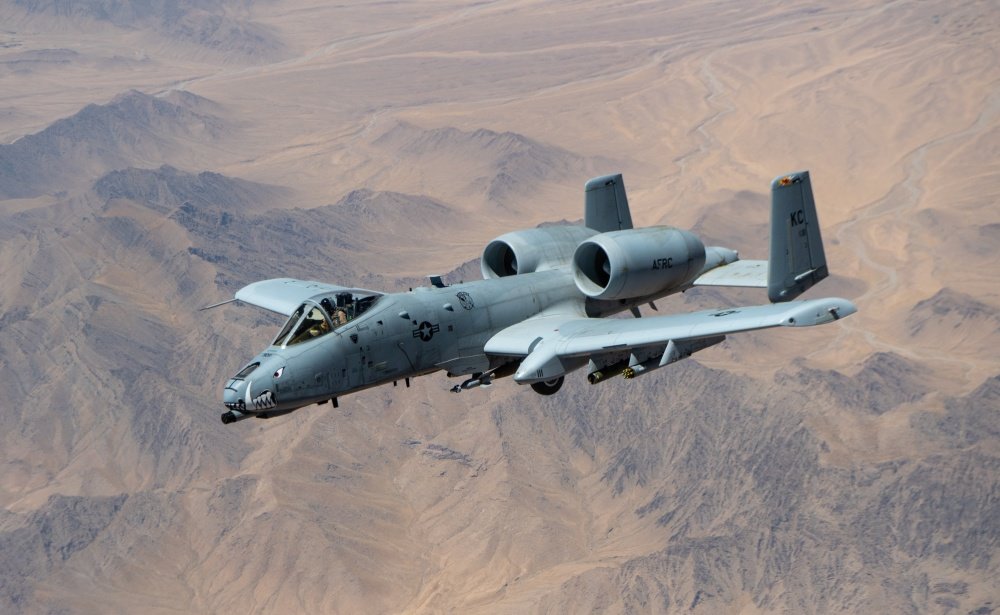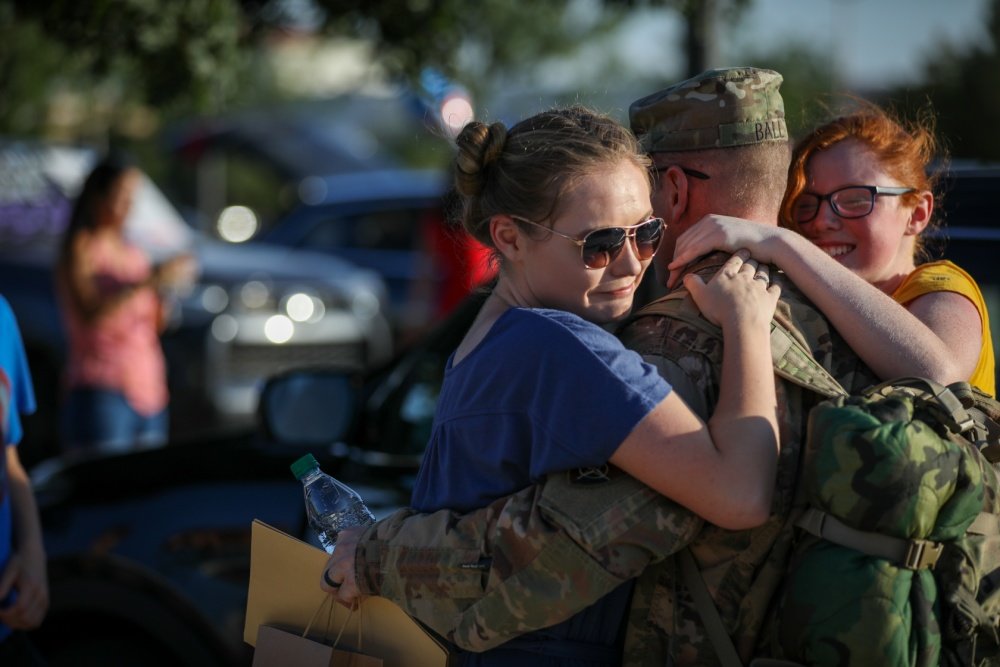US Airstrikes Pound Taliban, Casting Doubts Over May 1 Afghanistan Withdrawal Deadline

A U.S. Navy F/A-18E Super Hornet releases flares over Afghanistan, Jan. 23, 2020. The F/A-18E is the Navy��’s primary strike and air superiority aircraft providing force projection, interdiction, and close and deep air support. U.S. Air Force photo by Staff Sgt. Matthew Lotz via DVIDS.
Is this what victory looks like?
Less than three months prior to the May 1 deadline for all US troops to leave Afghanistan, US warplanes conducted multiple airstrikes this week against Taliban forces massing to attack Afghan government troops in the country’s southern Kandahar province.
The US strikes, which followed months of ramped-up attacks by Taliban militants on Afghan government forces, highlight how surging violence across Afghanistan could forestall a withdrawal timeline for US troops the Trump administration established as part of a peace deal with the Taliban.
The US warplanes targeted Taliban units in Kandahar Province’s Zharay, Spin Boldak, and Kandahar districts as they were “actively attacking & maneuvering on” Afghan troops, US Forces-Afghanistan spokesman Col. Sonny Leggett said on Twitter.
Without announcing the exact number, the US military said it carried out multiple airstrikes over 48 hours leading into Wednesday. “The US continues to defend [Afghan forces] in accordance w/ the US-TB agreement,” Leggett wrote on Twitter, referring to the Trump-era withdrawal plan.

Signed in the Qatari capital of Doha in February 2020, the Trump administration negotiated a cease-fire deal with the Taliban that paves the way for an American exit from Afghanistan by May 1.
As part of the Doha Accord, the Taliban pledged to not attack US forces. However, the pact largely excluded the sitting Afghan government, and failed to create a durable peace. Taliban forces have subsequently focused their violence on the Afghan government, leading some to warn that the insurgency may take over the country once US forces leave.
In a Wednesday interview with ABC News’ George Stephanopoulos, President Joe Biden said meeting the May 1 withdrawal deadline “could happen, but it is tough.” If the agreed-upon timeline isn’t met, it will not take “a lot longer” for US forces to leave the embattled country, Biden added.
This week’s US airstrikes drew a swift rebuke from the Taliban.
“We strongly condemn these bombardments and crimes by the American invaders,” Taliban spokesman Qari Yousaf Ahmadi reportedly said in a statement about this week’s American airstrikes.
“This is clearly a violation of the Doha agreement,” Ahmadi said.

The Taliban has largely avoided major strikes against international forces in advance of the US withdrawal deadline — a move presumably intended for the cynical purpose of showing US forces out the door. However, the Taliban has rerouted its violence squarely onto Afghan government forces.
Across the country, Taliban forces are on the march, closing in on major cities such as Kandahar. The traditional winter lull in combat failed to materialize this year, underscoring what some military officials and experts warn is a chilling bellwether for a particularly bloody spring fighting season. Afghan news outlets report that the Taliban have promised a spring offensive if US and NATO forces do not leave the country.
“Taliban violence is much higher than historical norms,” Gen. Scott Miller, commander of US and NATO coalition forces in Afghanistan, told Reuters in February. “It just doesn’t create the conditions to move forward in what is hopefully a historic turning point for Afghanistan.”
Amid the uptick in violence, Taliban units continue to sustain heavy casualties at the hands of Afghanistan’s defense forces, which now favor airstrikes to spare ground forces from heavy losses.

The US officially ended its combat mission in Afghanistan in 2014, shifting to a so-called advise-and-assist operation that left Afghans to bear the brunt of fighting the Taliban. The move led to a sharp drop in American casualties.
Some 13,000 US military personnel were in Afghanistan one year ago. In January the US officially reduced its troop level in Afghanistan to 2,500 personnel. However, the true number is closer to 3,500, The New York Times reported March 14.
“That was not a very solidly negotiated deal that the president, the former president worked out,” Biden said during Wednesday’s interview, referring to the Trump administration’s deal with the Taliban. “We’re in consultation with our allies as well as the government, and that decision is in process now.”
American forces in Afghanistan provide air support and other types of assistance to Afghan forces. Moreover, some 7,000 NATO soldiers also remain in Afghanistan and are largely reliant on the US for logistical support.

The US originally went to war in Afghanistan in October 2001 with the goals of toppling the Taliban regime and bringing Usama Bin Laden and al Qaeda to justice for the Sept. 11, 2001, attacks. Those objectives morphed over the intervening decades into a counterinsurgency campaign against the Taliban and a broader democracy-building exercise.
The Trump administration initiated twin US drawdowns in Iraq and Afghanistan, intending to free up US counterterrorism resources to wage a fight that is now more globally dispersed than in the period immediately following the September 2001 terror attacks. Africa, in particular, has become a new global hotspot in the fight against Islamist terrorist groups. Moreover, after two decades of counterinsurgency wars, all branches of the US armed services are evolving to face the threats posed by China and Russia.
Both ISIS and al Qaeda have expanded their footprints in Afghanistan in recent years, raising the specter that the country could once again become a safe harbor for terrorist groups with designs on attacks against the US homeland.
The United Nations Security Council reported in May that senior al Qaeda leaders maintain close ties with the Afghan Taliban, and between 400 to 600 al Qaeda operatives remain in Afghanistan. The Afghan Taliban and al Qaeda reportedly struck an agreement in 2020 to continue their cooperation.
“If the violence isn’t reduced, it’s going to make a peace process very, very difficult; it would be very difficult for any side to make the necessary compromises,” Miller, the commander of US and NATO coalition forces in Afghanistan, told Reuters in February.

BRCC and Bad Moon Print Press team up for an exclusive, limited-edition T-shirt design!
BRCC partners with Team Room Design for an exclusive T-shirt release!
Thirty Seconds Out has partnered with BRCC for an exclusive shirt design invoking the God of Winter.
Lucas O'Hara of Grizzly Forge has teamed up with BRCC for a badass, exclusive Shirt Club T-shirt design featuring his most popular knife and tiomahawk.
Coffee or Die sits down with one of the graphic designers behind Black Rifle Coffee's signature look and vibe.
Biden will award the Medal of Honor to a Vietnam War Army helicopter pilot who risked his life to save a reconnaissance team from almost certain death.
Ever wonder how much Jack Mandaville would f*ck sh*t up if he went back in time? The American Revolution didn't even see him coming.
A nearly 200-year-old West Point time capsule that at first appeared to yield little more than dust contains hidden treasure, the US Military Academy said.












